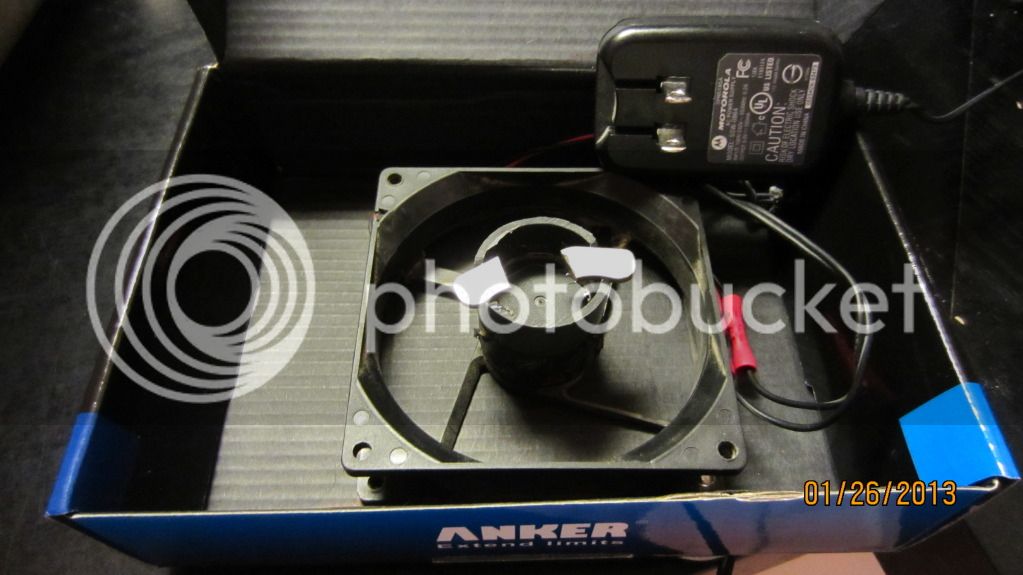I'm trying to get geared up to do liquid yeast in what I'm hoping is the correct fashion. One of the things I figured I'd need is a stir plate.
Here's one I cobbled together 100% from pieces and parts I had on hand. Total cost = $0

The 12V motor is a fan I took out of a really old power supply. It had a broken blade, so I broke/ground the others off to match. The magnets are pieces of one broken in two trying to get it off the innards of an old hard drive. They're epoxied to a piece of plastic pipe that's glued to the fan hub. The fan is direct wired into a 5.5V wall charger (from a Motorola cell phone) I found buried in a drawer. It's all mounted into the box that my wife's laptop replacement charger came in.
Question - The DIY stir plates I've seen online (that gave me the idea to do this) all use a higher voltage DC power source that is then wired through a rheostat, sometimes using a resistor. Should I add those things or is my plate currently spinning at the correct speed for stirring yeast starter?
Here is link to the video of it in operation with 1.8L of water in the flask.
Thanks!
Here's one I cobbled together 100% from pieces and parts I had on hand. Total cost = $0

The 12V motor is a fan I took out of a really old power supply. It had a broken blade, so I broke/ground the others off to match. The magnets are pieces of one broken in two trying to get it off the innards of an old hard drive. They're epoxied to a piece of plastic pipe that's glued to the fan hub. The fan is direct wired into a 5.5V wall charger (from a Motorola cell phone) I found buried in a drawer. It's all mounted into the box that my wife's laptop replacement charger came in.
Question - The DIY stir plates I've seen online (that gave me the idea to do this) all use a higher voltage DC power source that is then wired through a rheostat, sometimes using a resistor. Should I add those things or is my plate currently spinning at the correct speed for stirring yeast starter?
Here is link to the video of it in operation with 1.8L of water in the flask.
Thanks!
Last edited by a moderator:


